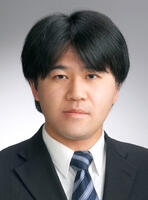Research Experience
-
2025.04-Now
東京大学先端科学技術研究センター 洋上風力開発推進施設(AIHOW) 客員上級研究員
-
2019.04-Now
Waseda University
-
2016.06-Now
The National Institute of Advanced Industrial Science and Technology (AIST) Artificial Intelligence Research Center Guest Researcher
-
2020.04-2025.03
NHK放送技術研究所 客員研究員
-
2012.04-2019.03
Waseda University
-
2015.05-2015.08
, Brno University of Technology Visiting Scholar
-
2012.04-2015.03
, Egypt-Japan University of Science and Technology Adjunct Associate Professor
-
2014.06-2014.07
Brno University of Technology Visiting Scholar
-
2013.06-2013.08
Johns Hopkins University Visiting Researcher
-
2012.06-2012.09
Johns Hopkins University Visiting Researcher
-
2007.11-2012.03
Assistant Professor, Waseda Institute for Advanced Study
-
2007.04-2007.10
Visiting Lecturer, Waseda University
-
2004.04-2007.03
Research Associate, Waseda University


Click to view the Scopus page. The data was downloaded from Scopus API in December 12, 2025, via http://api.elsevier.com and http://www.scopus.com .